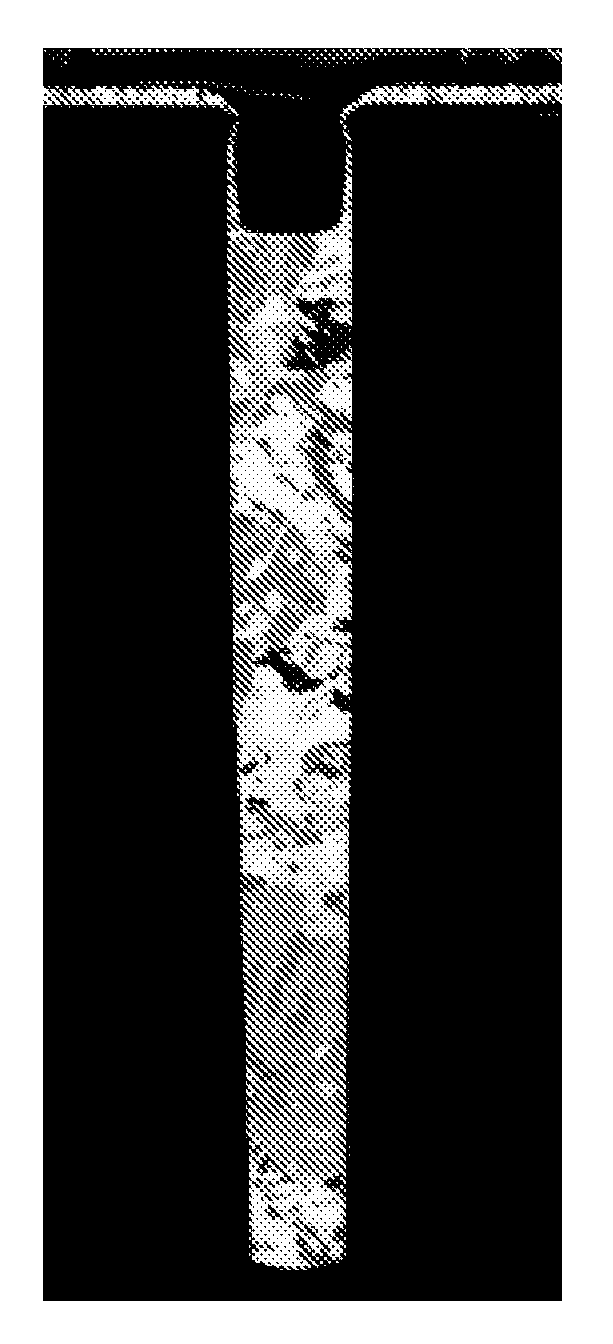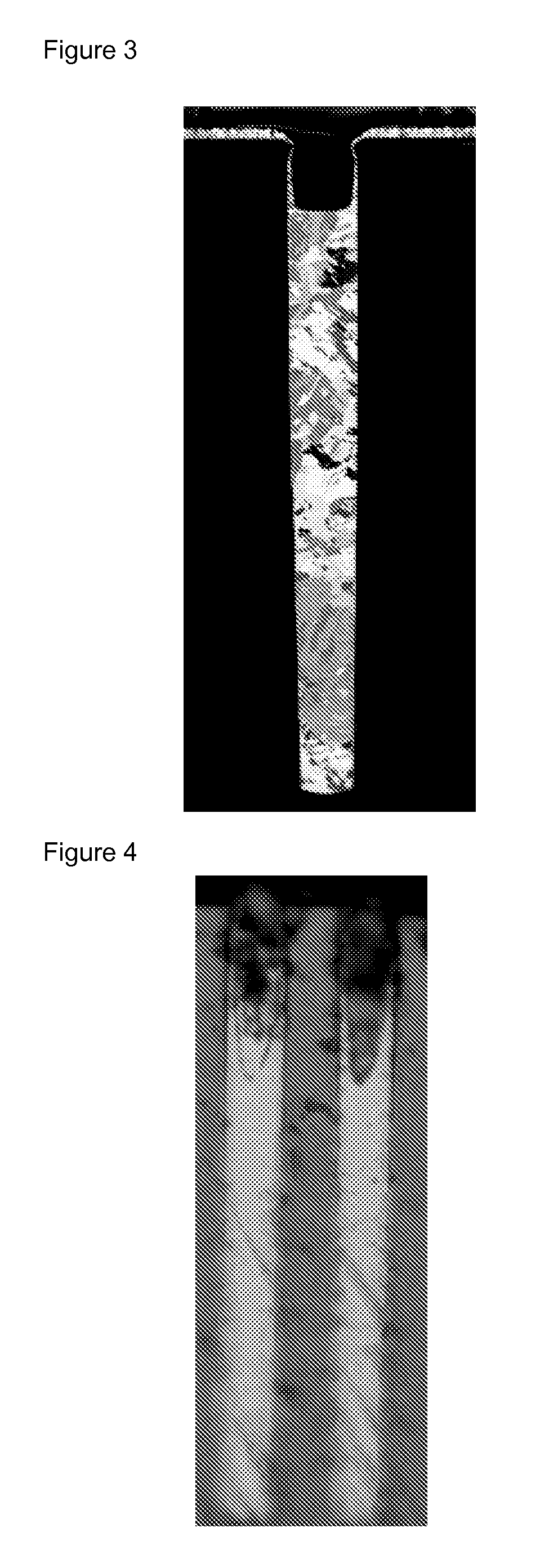Composition for metal electroplating comprising an additive for bottom-up filling of though silicon vias and interconnect features
a silicon via and additive technology, applied in the direction of liquid/solution decomposition chemical coating, coating, semiconductor devices, etc., to achieve the effect of reducing or substantially eliminating overplating, less time and effort, and high reflectivity
- Summary
- Abstract
- Description
- Claims
- Application Information
AI Technical Summary
Benefits of technology
Problems solved by technology
Method used
Image
Examples
example 3
Functionalized Polyaminoamide 1 from Polyaminoamide C1 and Benzyl Chloride
[0176]Polyaminoamide C1 (358 g), water (297 g) and benzyl chloride (84.9 g, 670 mmol) were placed into a 1 l apparatus and stirred at 80° C. for 6 h. One part of the resulting liquid (50 g) was washed by dichloromethane (3×20 ml) to remove unreacted benzyl chloride and the side product benzyl alcohol. Then, volatile compounds were removed at 80° C. in vacuo to give leveler 1 as a light rose solid (7.70 g) showing a nitrogen content of 12.5 g N / 100 g.
example 4
Functionalized Polyaminoamide 2 from Polyaminoamide C1 and Styrene Oxide
[0177]Polyaminoamide C1 (200 g) and water (408 g) were placed into a 1 l apparatus and heated to 100° C. during 30 min. Then, styrene oxide (11.5 g) was added dropwise during 8 min. The reaction mixture was stirred at 100° C. for 4 h, cooled to room temperature and the solvent was removed in vacuo at 80° C. Polyaminoamide 2 was obtained as a beige solid (63.5 g). Gel permeation chromatography revealed an average molecular weight of Mw=27600 g / mol and a polydispersity of Mw / Mn=1.8.
example 5
Functionalized Polyaminoamide 3 from Adipic Acid and Diethylene Triamine (Molecular Ratio 18:19), PO and Benzyl Chloride
[0178]Diethylenetriamine (820 g, 7.95 mol) was introduced into a 4 l apparatus and water (205 g) was added resulting in a temperature increase up to 54° C. The solution was heated to 60° C. and adipic acid (1100 g, 7.53 mol) was added in portions during 8 min. During this time the temperature increased up to 127° C. Then, a constant nitrogen stream was turned on, the temperature was increased to 180° C. within 30 min, and water and traces of diethylenetriamine were destilled off for 3 h at 180° C. The resulting distillate (488 g) showed an amine number of 0.48 mmol / g, indicating a content of 8.0 g diethylenetriamine in the distillate. The heating was turned off and when the temperature reached 161° C., water (1918 g) was added slowly. The reaction product was filled into a 101 Erlenmeyer flask, followed by the addition of another water portion (4800 g). The resulti...
PUM
 Login to View More
Login to View More Abstract
Description
Claims
Application Information
 Login to View More
Login to View More - R&D
- Intellectual Property
- Life Sciences
- Materials
- Tech Scout
- Unparalleled Data Quality
- Higher Quality Content
- 60% Fewer Hallucinations
Browse by: Latest US Patents, China's latest patents, Technical Efficacy Thesaurus, Application Domain, Technology Topic, Popular Technical Reports.
© 2025 PatSnap. All rights reserved.Legal|Privacy policy|Modern Slavery Act Transparency Statement|Sitemap|About US| Contact US: help@patsnap.com



